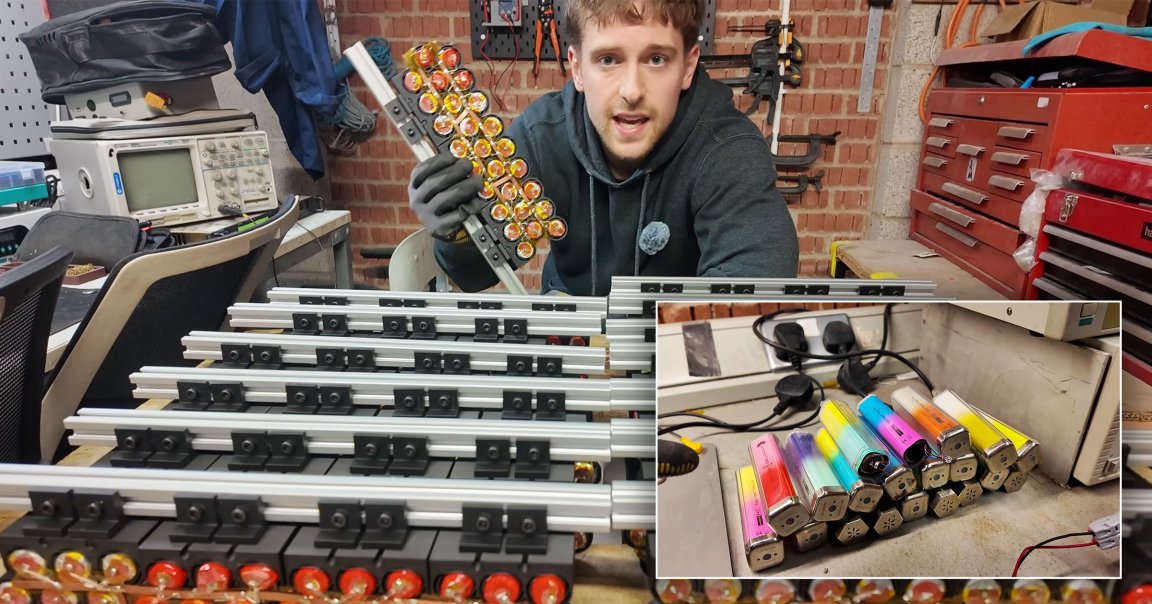
When it comes to wasteful consumption, maybe nothing is as symbolic as the disposable vape.
In 2023, the US alone was responsible for throwing out almost six vapes per second, or tens of millions of vapes a year, according to a report by the Public Interest Network. It doesn’t help that vapes seem engineered to wreak maximum as much havoc on the environment as on human lungs, containing non-recyclable lithium ion batteries housed in a forever-plastic shell.
However, it doesn’t have to be this way. As one 2023 study found, the lithium ion batteries used in most “single-use” vapes could be recharged up to 700 times. If you could somehow harvest all that storage power, it would have considerable value — but how could it be done?
That’s a question YouTuber Chris Doel was eager to find the answer to. Doel recently embarked on a months-long DIY project to repurpose 500 junk vapes found in the street to build a battery bank capable of powering his entire house.
To do so, he set out cracking hundreds of various vapes of all shapes and sizes to access their lithium innards, which he then planned to wire into a massive power pack.
There was just one main problem: there’s no quick and easy way to tell which vape batteries are still good to use. “If a lithium cell ever gets discharged below 3 volts, it becomes damaged and unusable. As we can see here, that’s the case for about half of these,” he said, gesturing to two piles of salvaged batteries.
Sure, Doel could take a pull on each vape to test which were still spewing out vapor, but on top of being gross, that takes a ton of time — not to mention lung capacity.
To solve the issue, the YouTuber scavenged a CPAP pump to rip on the vapes for him. As the CPAP pump is designed to “have the same amount of air pressure as a human lung,” it made a great tool for identifying which vape batteries could still hold enough charge to power his house.

After testing and harvesting hundreds of vapes from his local head shops, Doel was able to sort the battery cells based on capacity, in order to run them in parallel. It was an enormous effort, the YouTuber said over a montage of the harvest, which “shows why recycling programs for these things are such an enormous challenge, and barely even feasible most of the time.”
Using some 3D-printed modules to hold the batteries, Doel then painstakingly soldered the individual batteries to form a massive battery bank.
The result was a rather sketchy-looking 50-volt battery pack running in DC, which the YouTuber ran through an inverter to produce house current.
“This is just amazing, isn’t it,” Doel said after he flipped the switch, delivering power to his workshop from the battery pack.
Of course, the house is the real prize. Sure enough, after seemingly disconnecting his house from the outside electrical grid, the YouTuber was happy to discover he’s able to turn on houselights, run a microwave, boil some water, and even edit the YouTube video about his project.
“So to answer the question, can you power a whole house using just disposable vape cells that are thrown away in the millions, then yes you absolutely can,” he said triumphantly.
More on DIY projects: Man Builds Robot to Force-Feed Him Alcohol